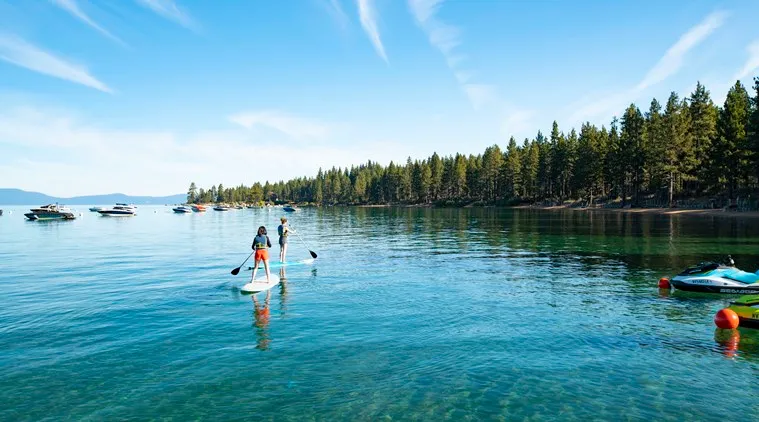As the Fourth of July holiday weekend approaches, many families across America plan to enjoy summer festivities at pools, beaches, rivers, and lakes. While these activities offer fun and relaxation, they also pose hidden dangers that must be acknowledged.

Understanding the Dangers of Popular Lakes
With warmer weather and clear skies, outdoor water activities become a favorite pastime. However, it is crucial to be aware of the potential hazards that come with visiting some of America’s most popular lakes. The Great Lakes, in particular, have been notorious for water-related accidents.
Staggering Statistics: Drownings and Fatalities
In 2024 alone, 28 deaths have already been reported at the Great Lakes, according to the Great Lakes Surf Rescue Project. Lake Michigan, the most perilous of the five lakes, accounts for 10 of these fatalities. In 2023, the Great Lakes witnessed a total of 85 deaths, with Lake Michigan leading the count at 41, followed by Lake Erie and Lake Ontario with 17 each, Lake Superior with 6, and Lake Huron with 4. Most of these deaths result from drownings. The statistics highlight the importance of caution and preparedness when visiting these vast bodies of water.
Lake Lanier in Georgia is another lake infamous for its tragic history. Between 1994 and 2022, at least 216 people lost their lives at Lake Lanier, based on data from the Georgia Department of Natural Resources Law Enforcement Division. In 2023 alone, Lake Lanier reported 13 deaths, with eight attributed to drowning. The Centers for Disease Control and Prevention (CDC) underscores the severity of this issue by revealing that over 4,500 people drowned annually from 2020 to 2022. These numbers serve as a grim reminder of the need for vigilance and safety measures when enjoying time at the lake.
EPA Guidelines for Lake Safety
Beyond the risk of drowning, the U.S. Environmental Protection Agency (EPA) warns of additional dangers when visiting lakes. Whether you are fishing, kayaking, or boating, it is essential to remain alert for any changes from local water regulation agencies. The EPA advises checking local or state advisories and real-time water quality reports before swimming.
To ensure safety, the EPA offers several guidelines:
- Steer Clear of Farm Animals: Avoid swimming near farm animals to prevent contamination.
- Don’t Ingest Untreated Water: Refrain from drinking water from lakes unless it has been properly treated.
- Avoid Swimming with Open Wounds and Cuts: This can prevent infections from bacteria present in the water.
- Keep Pets Away from Water with Visible Green Scum: This can be a sign of harmful algae.
- Bathe or Shower Immediately After Swimming: This helps remove any potentially harmful substances.
- Avoid Swimming After Heavy Rainfall: Wait at least three days after heavy rains to swim, as runoff can bring pollutants into the water.
- Don’t Swim if You Are Sick: Particularly if experiencing symptoms such as vomiting or diarrhea.

By following these guidelines and being aware of the potential dangers, families can enjoy their time at America’s lakes more safely. As we celebrate the Fourth of July, let’s prioritize safety to ensure our holidays are filled with joy and free from tragedy.
